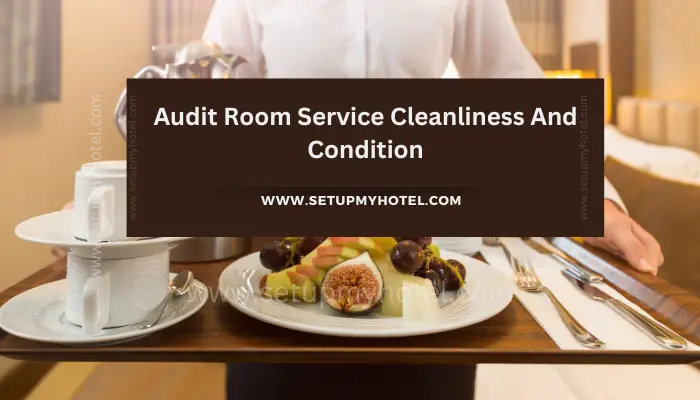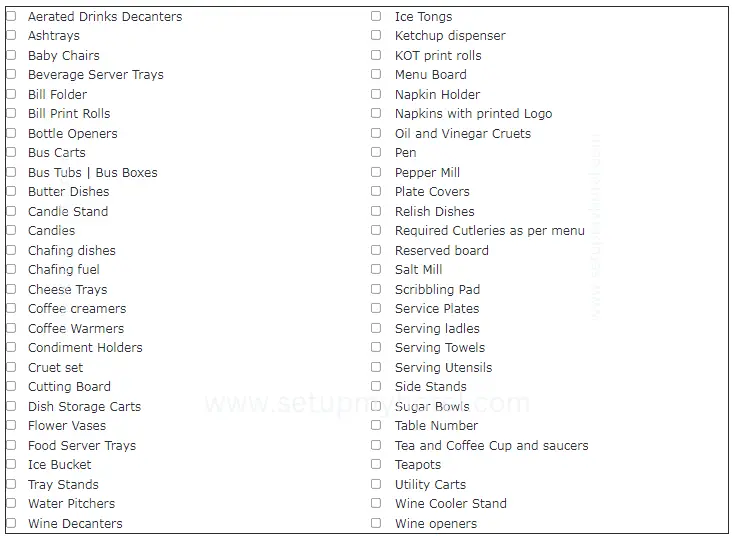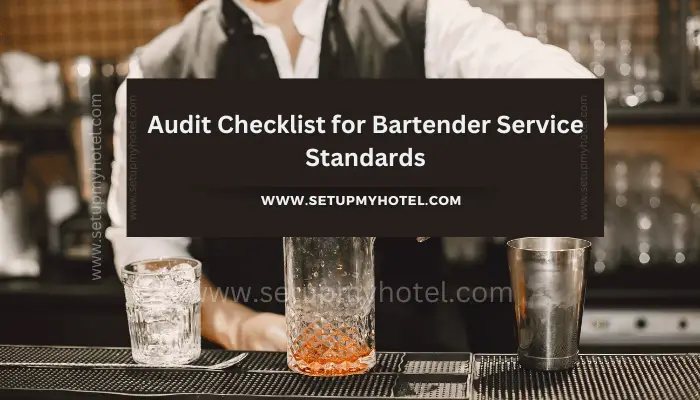Audit Room Service Cleanliness And Condition

Audit checklist for Room Service / IRD cleanliness and condition. As a hotel guest, room service is one of the ...
Read more
Conference And Banqueting Systems Demo Checklist
Hotel Conference and Banqueting Software demo questioners Available Features in Banqueting Software
Read more
Service Standard Checklist – Pool Side And Beach Area Beverage Service
Poolside and Beach Area Beverage Service Standards
Read more
Service Standard Audit Checklist – Restaurant Host Or Hostess
Restaurant Host or Hostess Service Standard Audit Checklist
Read more
Service Standard – Restaurant Server Or Maître d’ Audit Checklist
Restaurant Server or Maître d’ Audit Control Checklist
Read more
Checklist For Purchasing Food And Beverage Service Equipment

Purchasing F&B Service Equipment Creating a checklist for purchasing Food and Beverage (F&B) service equipment is crucial to ensure that ...
Read more












